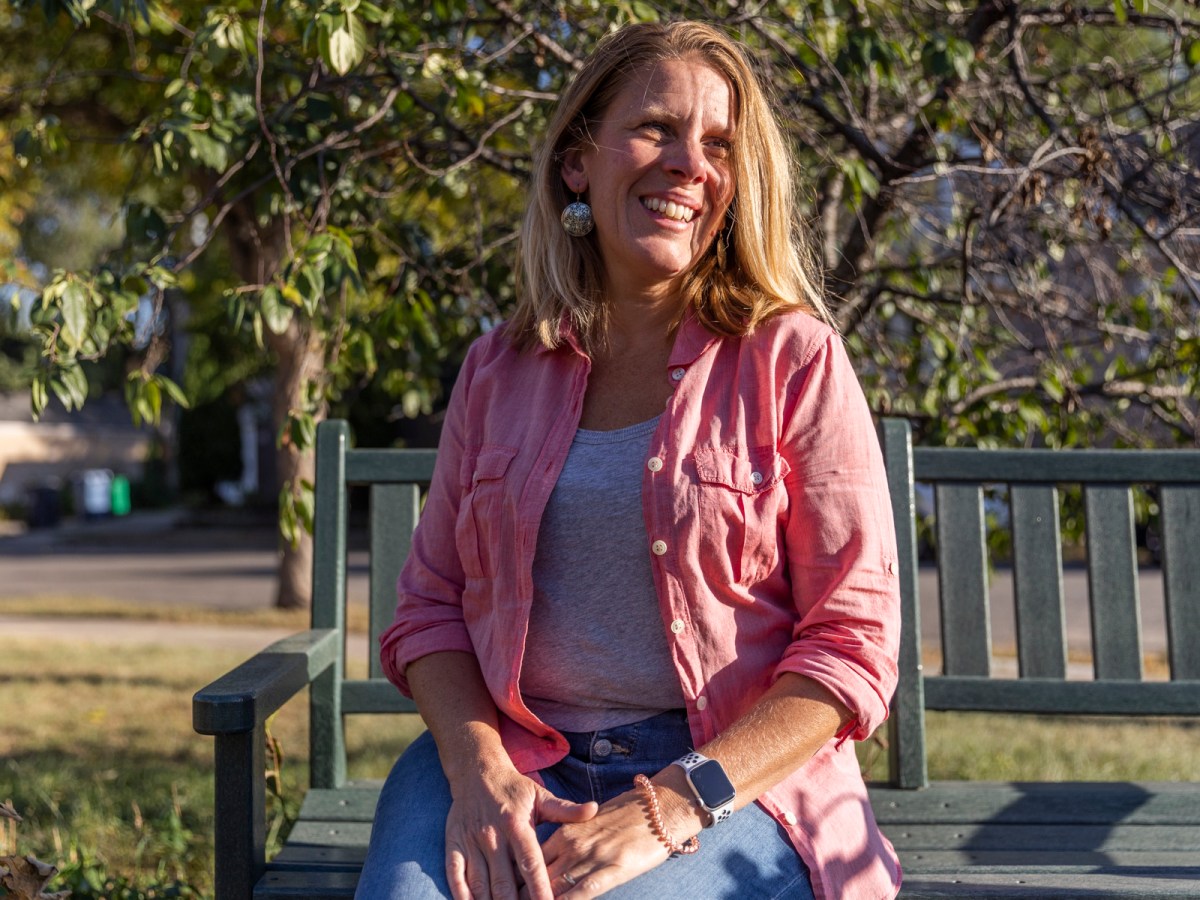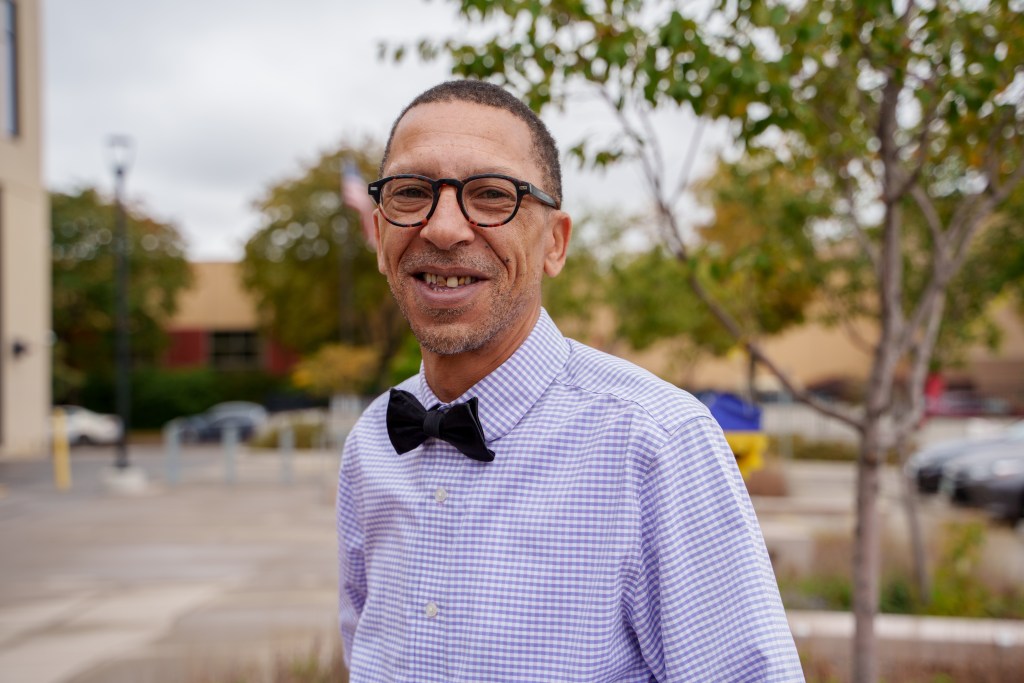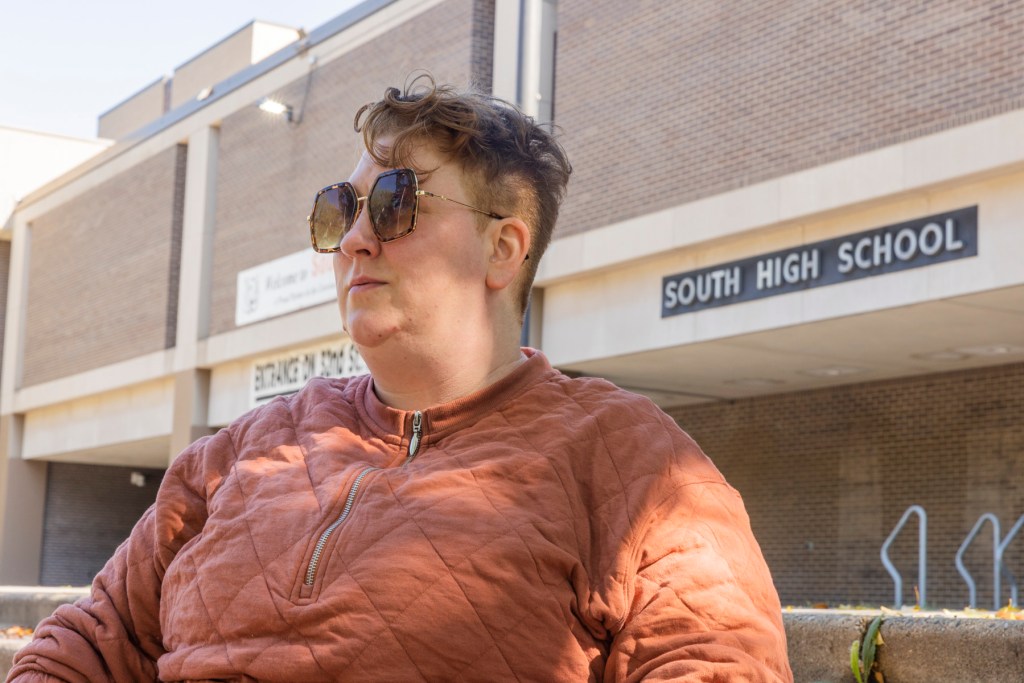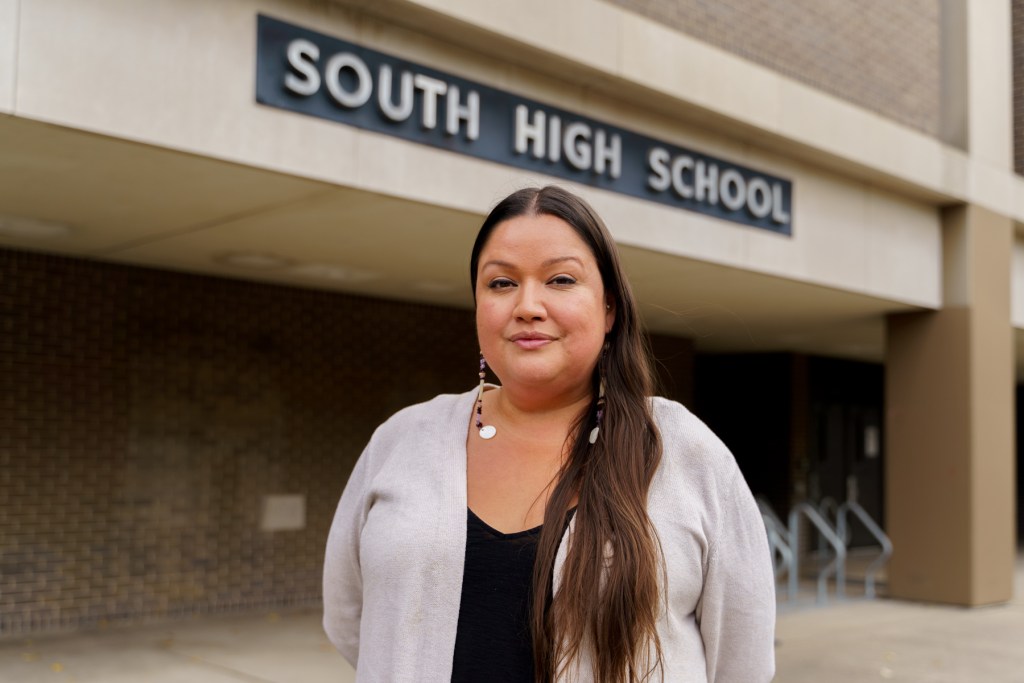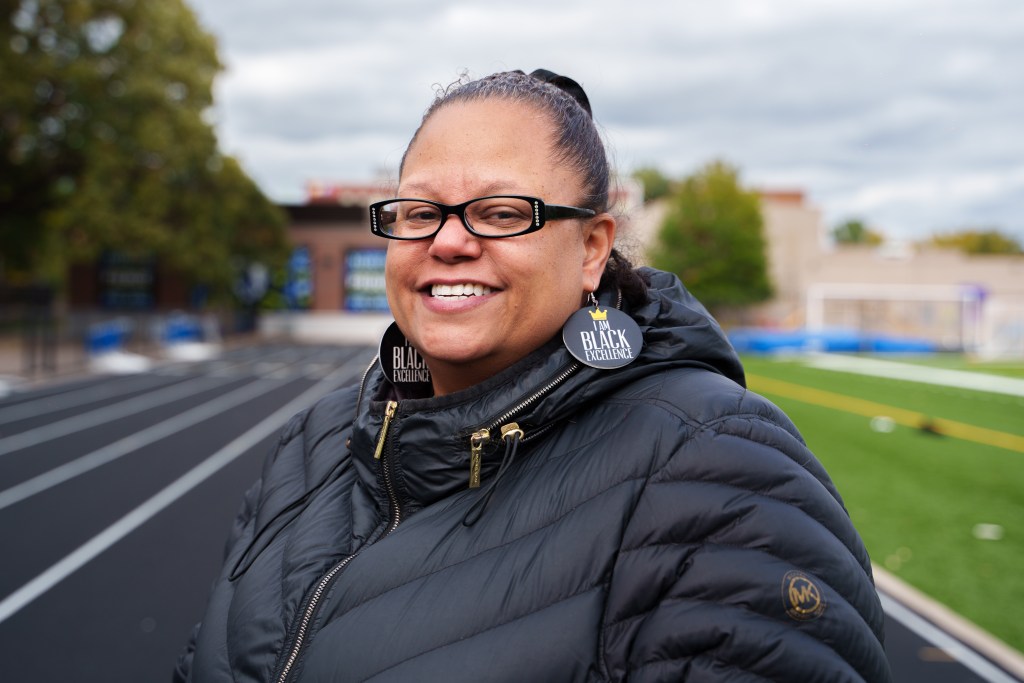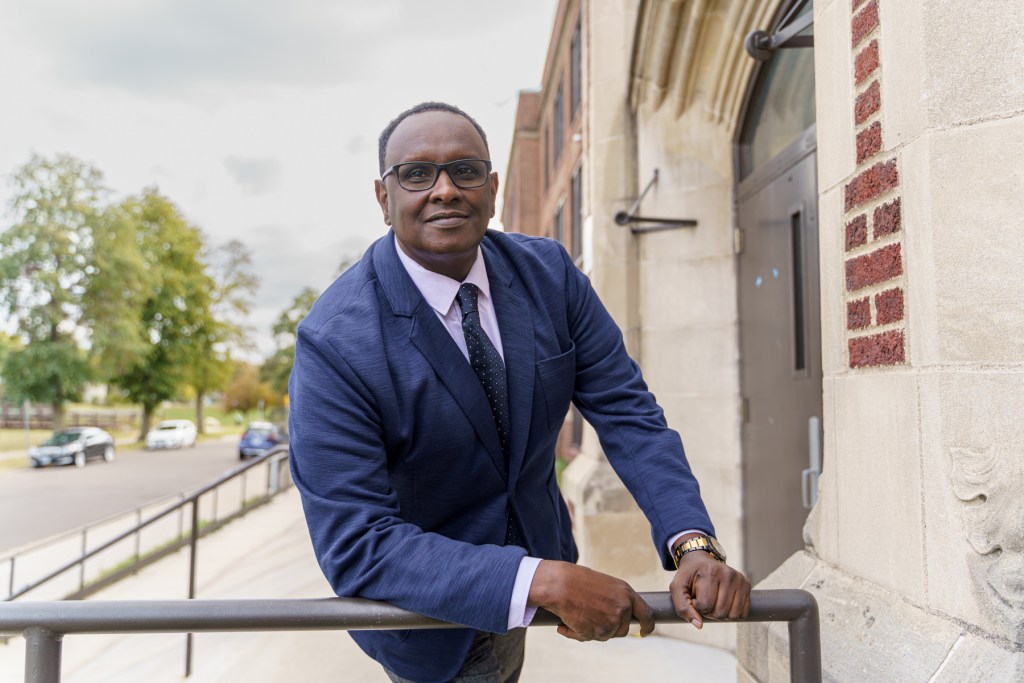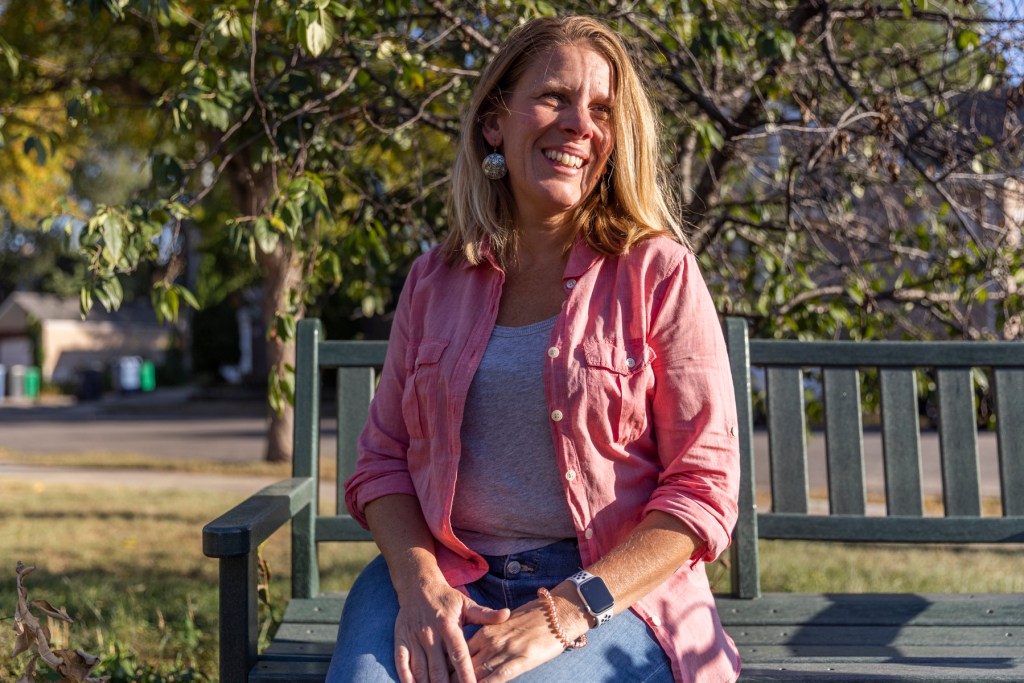Laurelle Myhra, 41, is running to represent District 5 on the Minneapolis school board. District 5 represents parts of south Minneapolis including Bancroft, Lake Nokomis, and Longfellow. Myhra faces Lori Norvell in the race for the District 5 seat.
Name: Laurelle Myhra
Age: 41
Day job: Director of Mino Bimaadiziwin Wellness Clinic. The center includes a pediatric mental health clinic and intensive outpatient mental health and substance abuse treatment.
Kids: A 5-year-old at Bancroft Elementary School and an 8-year-old who attends school in Mahtomedi
Neighborhood: Longfellow
Laurelle Myhra decided to run for school board based on her experiences as a parent and her work on the American Indian Parent Advisory Committee.
Her 5-year-old son attends Bancroft Elementary School. Her 8-year-old daughter used to attend Bancroft, too. But she now attends school in Mahtomedi, due to a combination of family complications—Myhra’s ex-husband lives there—and her own academic needs.
“She has some learning disabilities,” Myhra said. “So the school just wasn’t able to provide her the support she needed.” Myhra also noticed that her daughter did not have many teachers of color. When she moved to a different district school, the diversity in students dropped too.
“I joined the American Indian Parent Advisory Committee and learned a ton about what other families were experiencing, and it was in line with what I was experiencing,” Myhra said. “I also learned about the district’s struggles with the budget and the special education spending gap. That struck my interest because I have about seven years of experience directing and fundraising, doing some of the work that I think could be helpful to the district.”
Myhra hopes to bring her expertise in mental health to the school board. She currently works as the director of the Mino Bimaadiziwin Wellness Clinic. The Red Lake Nation recruited Myhra, a licensed marriage and family therapist and enrolled member of the tribe, to open the clinic.
Here’s how Myhra would approach her job on the Minneapolis school board.
In one sentence, why should people in Minneapolis vote for you?
Because of my expertise and experience providing culturally responsive mental health care, experience implementing racial equity initiatives and committees, and business acumen and fundraising experience.
What do you love about Minneapolis Public Schools? Can you give your answer in two to three bullet points?
- I love the diversity. Not all of the schools have this, but Bancroft is really diverse.
- I love the emphasis on learning other languages. Bancroft has Spanish-speaking teachers and Spanish offered throughout all five years.
- I love the American Indian Education program, which is really thriving and successful in this district.
After a tumultuous term, Superintendent Ed Graff left the district at the end of June. Selecting a new superintendent will be one of the next school board’s most important duties. Briefly, what do you think are the three most important criteria for Minneapolis’ next superintendent?
I would say somebody who really understands systemic change in the way of racial equity: how to address the educational gap by looking at the policies and procedures that are reinforcing systemic racism.
Number two, somebody who’s really passionate and really driven, really cares about the students and is committed to being student-focused.
Number three, a strong business acumen but also creativity with how to address the funding gap, being willing to fundraise. I feel like a lot of people that I’ve talked to in the district are very bleak and not hopeful at all about where things are going, rather than thinking, Well, what haven’t we done yet? What could we be doing?
There’s huge businesses here that are probably really proud of the state schools, especially Minneapolis, they’re going to be recruiting out of them for employees. There’s so much opportunity there that I think is untapped.
In March, teachers and education support professionals held a 14-day strike, which made many staff frustrations public and kept kids home for three weeks. What are the two or three most important lessons you learned from the educator strike?
Being proactive about keeping up with competitive pay is really important. That was something that we all knew was a big problem, and could have been proactively addressed so that there wasn’t a strike.
Also, valuing our teachers, especially those who are underpaid like education support professionals who particularly tend to be those of color. Valuing financially and also finding creative ways to promote their effectiveness: incentives and benefits that could be increased. I’m thinking about education for them, time away from work to get that education, and paying for their additional continuing education.
How would you apply those lessons as a school board member?
Definitely advocating for better pay for them and advocating for those incentives and benefits.
Going back to what I had talked about before: proactivity and looking for funding. A big part of the conversation was, we don’t have the money long-term to support increases. Well, what are we doing about that? There’s a huge surplus every year at the state level that we could be tapping into to help pay for that gap in special education, for example. Heating up the advocacy, not just when there’s a crisis but proactively advocating. That was something that really stood out to me, the financial conversation.
Over the last few years, Minneapolis Public Schools has struggled with steady enrollment declines. How would you help Minneapolis Public Schools reverse enrollment declines and attract and retain students? Please give your answer in bullet points/action steps.
- A partnership or collaboration between a lot of organizations that are also focused on that. I think of Great Minnesota Schools. I’ve been really impressed by the tools they’ve come up with. They have a booklet on rating the schools and just telling about the schools, and they have an online tool as well. I was really impressed with that because that’s something that I would have loved to have as a parent. So I think that there’s other organizations that are also interested in that that could pull together and come up with a really good strategic plan to increase enrollment.
- A lot of people don’t have the opportunity to live in Minneapolis, but would love to send their kids. I think if that was more of an open conversation that people were having: Okay, you might live in the suburbs, but you can send your kids to Minneapolis, and having a campaign around that, that can help bring funding to schools too.
- I think there are things that we can do to shift the scores to attract more students, but also highlight some of the awesome things about the schools individually. They have such great strengths, and I think that’s what Great Minnesota Schools is doing really well. The goal would be for everybody’s academics and test scores to increase, but really letting the schools shine in their own unique way too.
Meet the other District 5 candidate
Over the last year, the school board has sometimes appeared sharply divided—not just in split votes, but in dynamics at school board meetings. That includes one board meeting where the superintendent, then some school board members, walked out. Do you think the current school board dynamic is working? If you think it isn’t, how do you propose to make this a more effective governance body?
With the new people on and all the seats open, I feel like it’s going to be a real opportunity for people who really want to see change and just stay focused: We’re all here to see things improve for students, and that’s our main goal. So really trying to get on the same page with how we do that might look a little different from person to person, but just being open to hearing people out.
The reality is there have been a lot of decisions that have been made that have harmed people of color and families. Right now, they need us to focus on how to remedy that and how to get the agenda focused solely on not just remediating, but also improving things for families.
Pandemic disruptions exacerbated racial academic disparities, in Minneapolis and around the country. What investments do you think the district needs to make now to help accelerate student learning and close gaps?
I would love to see more evidence-based curriculum for reading and math. Also, I would add having an additional aide in the classroom, who could help to focus on reading and math specifically and help implement a new evidence-based program that could help. I know that’s an effort that the schools want to do, but I think it’s going to take a lot more manpower. So getting more people on board to help with implementing that to catch kids up would be important.
Statewide, students have reported higher levels of mental health needs than before the pandemic. How do you think the district can better meet student mental health needs?
By partnering with some of the culturally responsive organizations that are already doing really good work in the community. For example, I oversee a Native-specific program that’s pediatric-focused. There’s five Native employees on that team, which is unheard of.
In the past, I’ve had contracts with Minneapolis Public Schools to provide services but there’s been some challenges with that, and I feel like some more support from the schools in making that successful is needed. I think that schools think that having the provider on-site is the only way to make that happen. But I think through the pandemic we’ve seen that you can do successful virtual care as well. Probably not for the younger kids, but definitely for the high school and adolescent age groups.
In two sentences, what’s another issue facing Minneapolis Public Schools we haven’t talked about and what’s your plan to tackle it?
Not only do we have to hire, but retain teachers of color. To do that successfully, I think we would have to review MPS’ hiring and HR policies, and look at how they’re doing that and where they’re recruiting from so that we’re on the cutting edge of best practices for hiring people of color and Indigenous folks.




